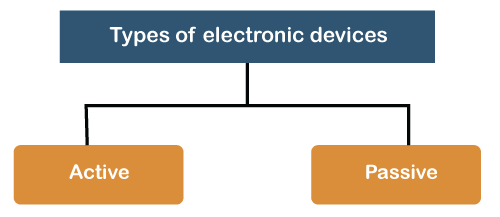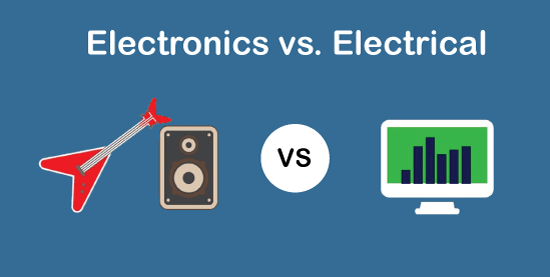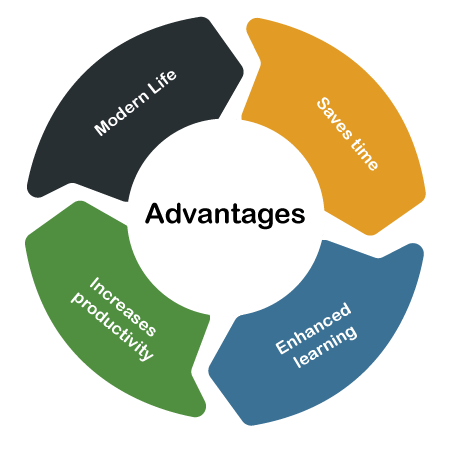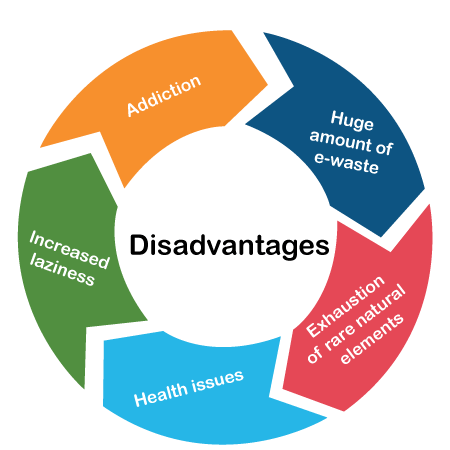Electronic devicesElectronic devices are small devices or a group of small devices designed to control the flow of electric current for their use in different applications. The purpose of electronic components includes motion control and information processing. The electronic devices can also be grouped for use in different applications. Let's consider an example of integrated circuits. Integrated circuits comprise small circuits soldered on a single chip. What is Electronics?Electronics is the combination of various fields, such as engineering, physics, and technology that work together to design and implement various electronic devices intended for different uses. Types of electronic devicesThe electronic industry's growth is on a rising level due to the increasing demand for electronic equipment. Let's discuss the type of electronic devices. 
The different types of electronic devices are listed below:
Let's discuss the active and passive components in detail. Active ComponentsThe active components generally supply energy or produce power. It includes oscillators, Integrated circuits, and transistors. These components depend on the external power for their functioning. Passive componentsThe passive components in electronics can only store, absorb, or dissipate the received energy in the electric or magnetic field. It includes resistors, capacitors, and inductors. Let's discuss the differences between active and passive components for better understanding. Active vs. Passive componentsThe differences are listed in the below table:
Electronics EngineeringElectronics engineering is a branch of electronics that deals with the designing and developing of electronics equipment, such as GPS (Global Positioning System), computer hardware, music systems, etc. It uses active and non-linear components to develop different devices. The components include transistors, diodes, Integrated circuits, etc. Various subfields come under the electronics, such as embedded systems, robotics, digital electronics, and analog electronics. Other field includes telecommunications, signal processing, power electronics, etc. Electronics vs. Electrical
Let's discuss the differences between electronics and electrical.
Mostly used electronic devicesThe types of electronic devices in use are not limited. The number of available electronic devices used today is in large number. Let's discuss some of the most common electronic devices.
Let's understand the above devices with a short description. Mobile phonesMobile phones are the most common electronic device use today. It is also called a cell phone, handphone, etc. It is a small handheld device that can make audio calls and video calls anywhere over the network. The mobile phones offer other features, such as Internet access, text messages, GPS, photography, video games, etc. BatteryA battery is a charging device used to power devices such as mobile phones, electric geysers, flashlights, electric vehicles, etc. The batteries come in different designs and shapes. The chemical composition inside a battery converts the chemical energy into electrical energy. PCsA personal computer is an electronic device that can be directly operated by an end-user. It does not offer any time-sharing ability. Hence, it can be operated by a single user at a time. Personal computers are intended for different purposes, such as engineering, marketing, laboratory, designing, etc. TransformersA transformer is a passive device that consists of two windings called primary and secondary. The transformer can step up (increasing the source voltage) or step down (decreasing the source voltage) the voltage. It comes in various designs and sizes. It ranges from the small transformers using is electronic equipment to large transformers used in the AC power distribution system. SwitchesThe switch is used to switch the electric current passing through the circuit. The switches can be easily controlled by hand. It is generally made of plastic that is an insulator. Hence, it does not conduct any current. It is a type of binary device that can be either ON or OFF. MotorsMotors are categorized as AC motors and DC motors. The AC motors operate through the flowing Alternating current (AC), while DC motors operate through Direct current (DC). The sources of DC are batteries, remote cells, etc. The sources of AC are generally high voltage applications, such as generators. MicrocontrollerA Microcontroller consists of the I/O peripheral, CPU, and memory. It is generally called a small computer, which is commonly used in automated control applications. Other microcontroller uses include embedded systems, toys, remote controls, personal computers, engine control systems, and medical devices. Washing MachinesA washing machine is an automatic machine that is used to wash clothes. It is a type of home appliance that is often known as laundry machine. The user operating the machine needs to add detergent powder or liquid to the water. It has replaced the need to wash the clothes by hands. RefrigeratorsIt is also a type of home appliance used to store food products to stay longer. The function of refrigerators is to transfer the heat to the external environment to make it cooler inside. The cold temperature inside a refrigerator prevents the food from spoilage by reducing the growth rate of bacteria. TelevisionsTelevision displays the moving images on the screen. The images can be two dimensional and three dimensional with color pixels. Television is a medium of entertainment, education, food, news, and education. It also consists of built-in speakers. The television is generally used for watching movies and programs. Game ConsolesGame consoles comprise of different video games. One or more than one person can play video games. It can be controlled with the help of a game controller attached to the game console. Advantages of the development of electronic devices
Here, we will discuss the advantages that electronic industry has given to us, which are listed below:
Disadvantages of the development of electronic devices
Here, we will discuss the impact of the development of devices on the people and environment, which are listed below:
AudienceElectronic devices are intended for use by anyone because these devices are used in daily life. ProblemWe assure you that you will not find any problem with this topic of Electronic devices. But if there is any mistake, please post the problem in the contact form.
Next TopicSemiconductor
|
 For Videos Join Our Youtube Channel: Join Now
For Videos Join Our Youtube Channel: Join Now
Feedback
- Send your Feedback to [email protected]
Help Others, Please Share









